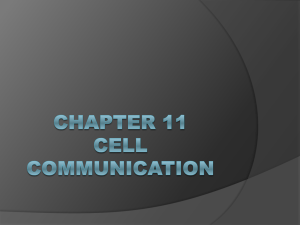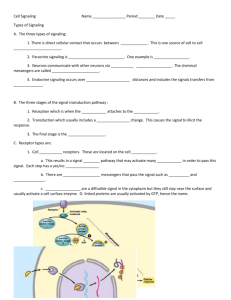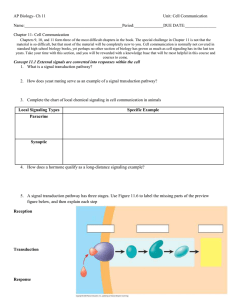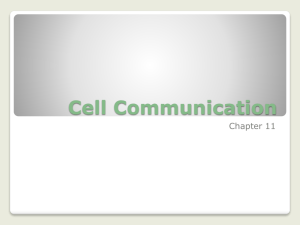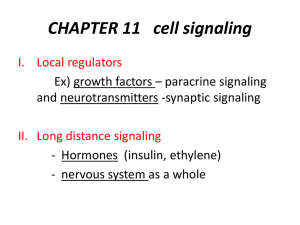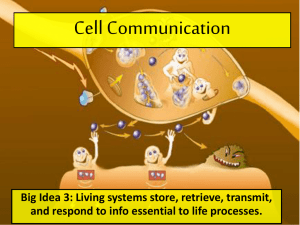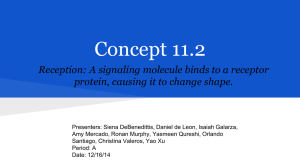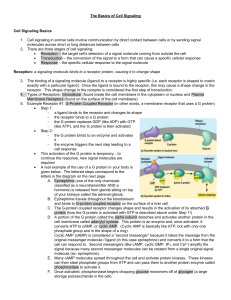Concept 11.1 External signals are converted into responses within
advertisement
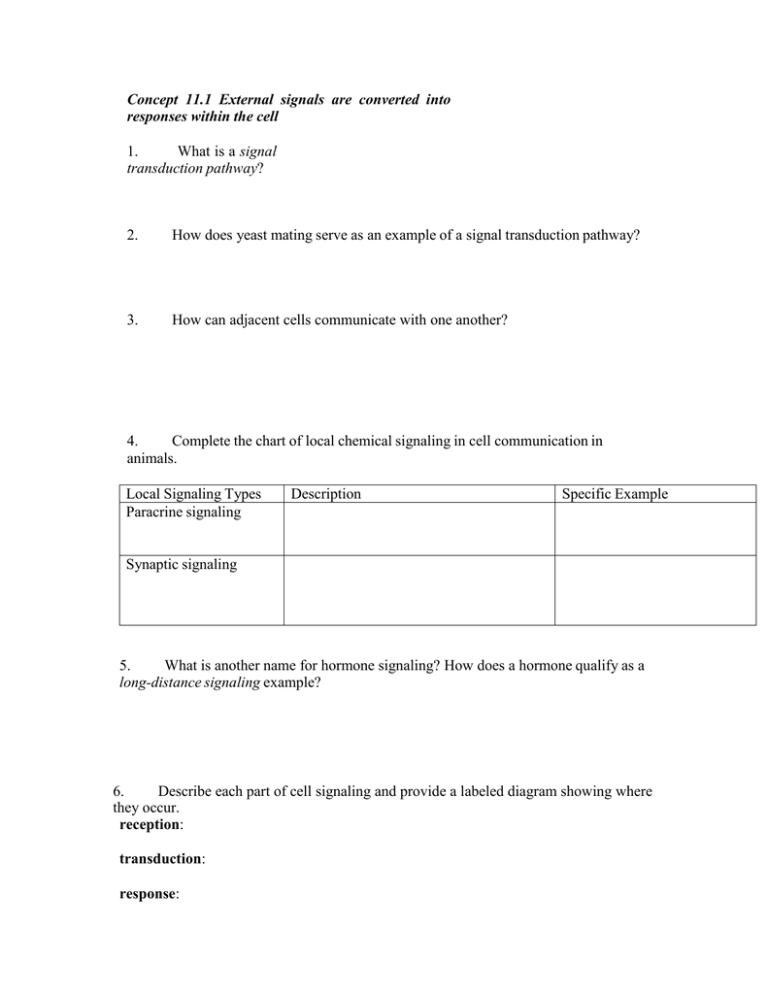
Concept 11.1 External signals are converted into responses within the cell 1. What is a signal transduction pathway? 2. How does yeast mating serve as an example of a signal transduction pathway? 3. How can adjacent cells communicate with one another? 4. Complete the chart of local chemical signaling in cell communication in animals. Local Signaling Types Paracrine signaling Description Specific Example Synaptic signaling 5. What is another name for hormone signaling? How does a hormone qualify as a long-distance signaling example? 6. Describe each part of cell signaling and provide a labeled diagram showing where they occur. reception: transduction: response: Concept 11.2 Reception: A signal molecule binds to a receptor protein, causing it to change shape 7. Explain the term ligand. (This term is not restricted to cell signaling.) 8. Discuss how intracellular receptors operate. How does the testosterone receptor protein carry out signal transduction? 26. Intracellular receptors are found either in the __________ or __________ of target cells. In order to be able to pass through the plasma membrane, the chemical messengers are either ________________ or very small, like nitric oxide. 28. An important idea, transcription factors, is introduced in Figure11.6. Explain the function of transcription factors in the cell. 9. The text will explain three major types of membrane receptors in Figure 11.7. This material is of fundamental importance, so we will work through the specific figures for each type of membrane receptor. The first example is a G protein-coupled receptor. G protein-linked receptor: G protein: GDP: GTP: 10. Describe what happens in step 2 of Figure 11.7 on p 206. 11. Describe what happens in step 3 of Figure 11.7. (The yellow box at the bottom right is important!) 12. Equally important to starting a signal is stopping a signal. Step 4 stops the signal. (Failure to do so can lead to serious problems, like cancer.) Describe how the signal is halted. 13. What activates a G protein? 14. A G protein is also a GTPase enzyme. What does this mean and why is this important? 15. The second type of receptors described are receptor tyrosine kinases. Explain what a kinase enzyme does. 16. How does tyrosine kinase function in the membrane receptor? 17. What is dimerization? 18. What is a key difference between receptor tyrosine kinases and G protein-coupled receptors? 19. Look next at ion channel receptors. The figure on p208 shows the flow of ions into the cell. Ion channel receptors can also stop the flow of ions. These comparatively simple membrane receptors are explained in three steps. Explain the role of the following molecules. ligand: ligand-gated ion channel receptor: ions: 20. The ligand attachment to the receptor is brief. Draw, label, and explain what happens as the ligand dissociates. 21. In what body system are ligand-gated ion channels of particular importance? Explain.


